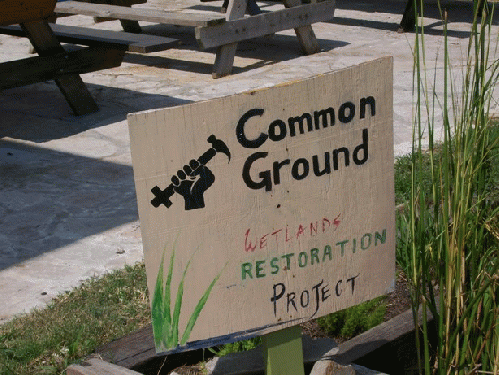(Here are my earlier articles in this series for those of you who want to catch up.)
To see Part 1, click here.
To see Part 2, click here.
To see Part 3, click here.
To see Part 4, click here.
To see Part 5, click here.
*******
Common Ground Relief’s Wetlands Restoration Project Mission Statement:
The Common Ground Wetlands Restoration program was created to proactively address the dangers faced by New Orleans and the Gulf Coast. We work to bring immediate attention to the ecological and political causes and effects of the 2005 hurricane devastation. The goal is to shed light on where wetlands restoration needs to happen, determine who should be responsible for doing it, and then to do it ourselves where ever possible.
I want to focus on Common Ground Relief again in Part Six, although somewhat belatedly since my last article, which I must apologize for. Common Ground had some computer server problems earlier this month and their website had to go down for several weeks, but now, right around Christmas, they have begun resurrecting their site. Good timing, metaphorically speaking.
Common Ground co-founder, Malik Rahim, who has been in the news lately as one of the residents of Algiers Point who was interviewed in The Nation’s troubling new article: Katrina’s Hidden Race War by A.C. Thompson (click here to read), immediately recognized how big a problem wetlands loss in Louisiana is in the days after Katrina hit on August 29, 2005. An astute man, he realized, like Tab Benoit, that if New Orleans is ever going to survive over the long haul, Louisiana’s wetlands, Mother Nature’s natural barrier against hurricanes, have got to be restored.
Soon he and his Common Ground comrades were envisioning wetlands restoration as one of their organization’s key projects, along with the creation of 1) legal services including advocacy, 2) rebuilding the Lower Ninth Ward and other areas of New Orleans using Green principles, 3) bioremediation: cleansing and restoring healthy soil in communities, 4) media projects, 5) a tech collective to help the community with all manner of IT problems and needs 6)comprehensive job training, including the rehabilitation of prisoners, and 7) community art, including mural painting. And then there is their hugely successful volunteer program which has brought in, over the last three years, thousands of young (and older) people to help resurrect the Lower Ninth Ward and other hard-hit areas.
By June, 2006, their wetlands project was inaugurated. Here is their website explanation of their wetlands program:
The Common Ground Wetlands Restoration program was created to proactively address the dangers faced by New Orleans and the Gulf Coast. We work to bring immediate attention to the ecological and political causes and effects of the 2005 hurricane devastation. The goal is to shed light on where wetlands restoration needs to happen, determine who should be responsible for doing it, and then to do it ourselves wherever possible. We are also dedicated to educating as many people as possible, both in Louisiana and beyond, on the critical role the wetlands play in our protection from storm surge and how to best keep them healthy. Our goal is to work with consideration and in solidarity with the people of the Gulf Coast.
Since June 2006, the Common Ground Wetlands Restoration Project has achieved a great deal in restoring precious wetlands and coastal regions. At the same time raising awareness for an issue that has been largely ignored by the media. Wetlands play a crucial role in both the region’s biodiversity and in lessening the impact of flooding on local environments. The Gulf Coast area has been losing wetlands at a rate of 16,000 acres a year prior to Hurricanes Katrina and Rita. The aftermath of those disasters left hundreds of miles of coastal wetlands already in peril from development and engineering projects devastating and endangering local wildlife and leaving the area more vulnerable to further damage. The Wetlands Restoration Project has led and assisted efforts in both restoration and education in hopes the wetlands can be restored in an effective and sustainable manner.
(Note: You can view every article as one long page if you sign up as an Advocate Member, or higher).





